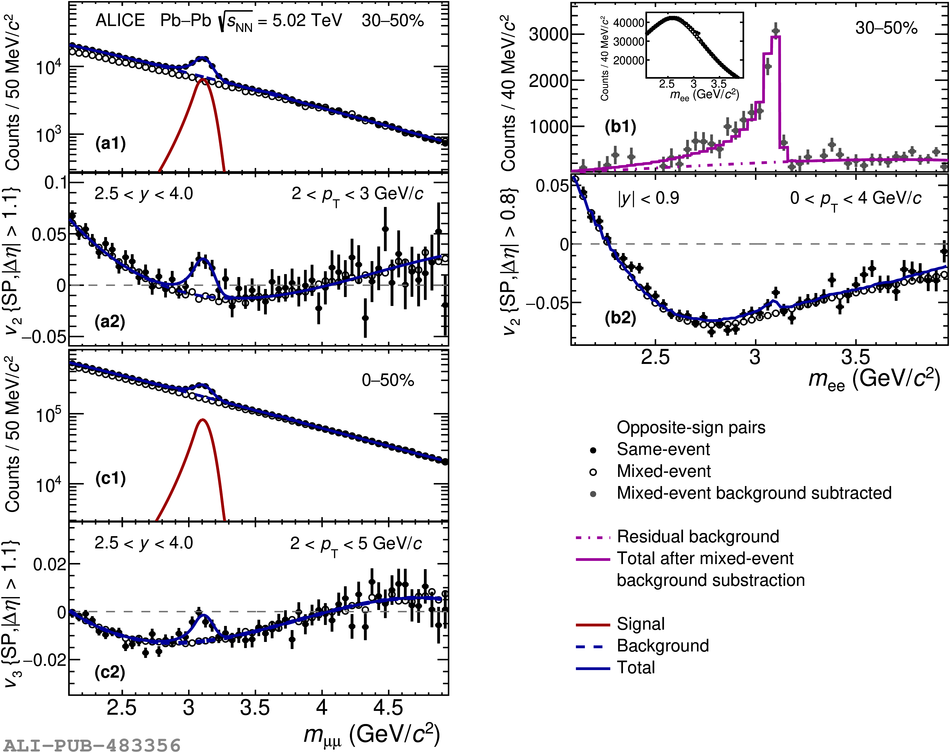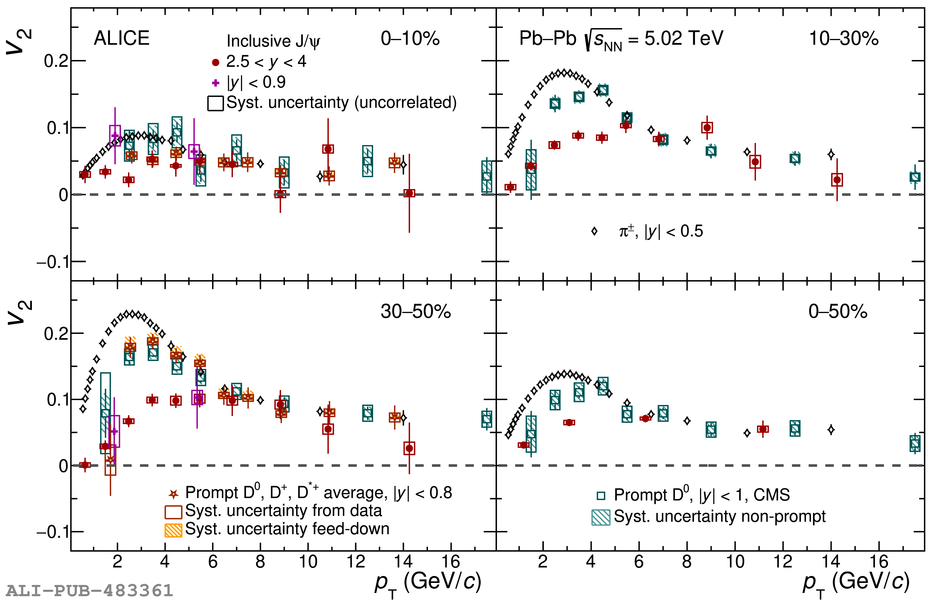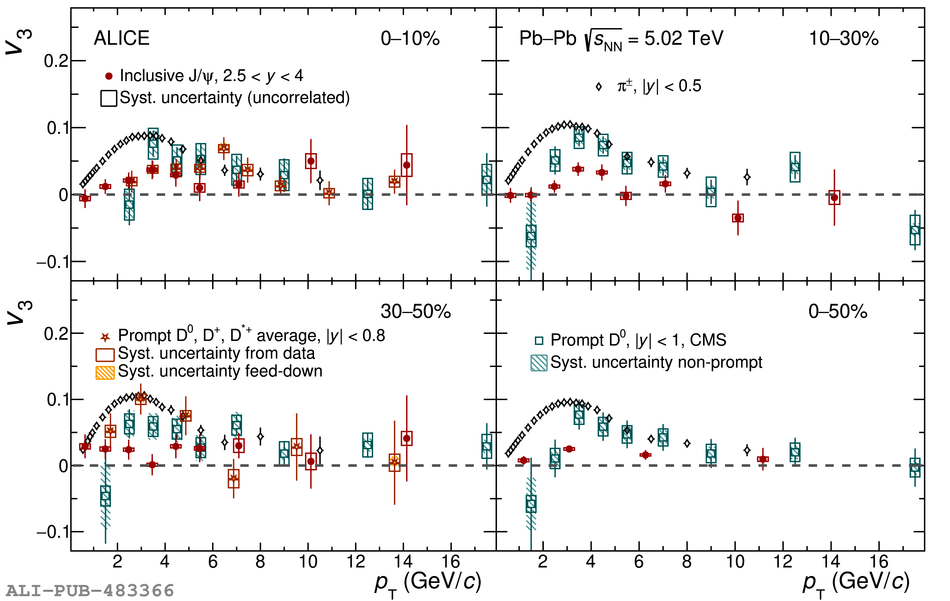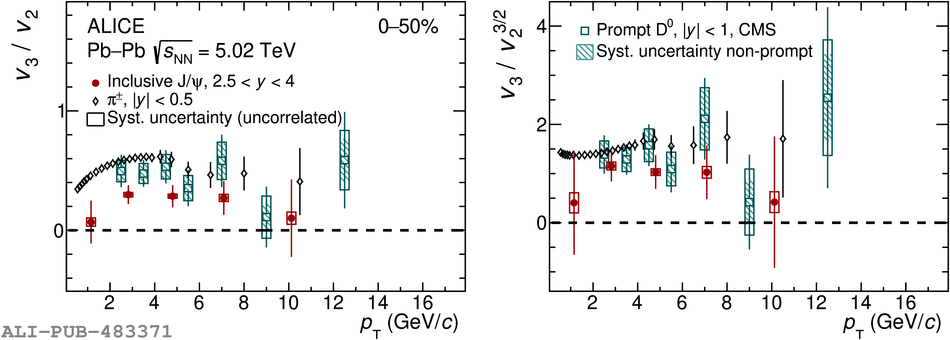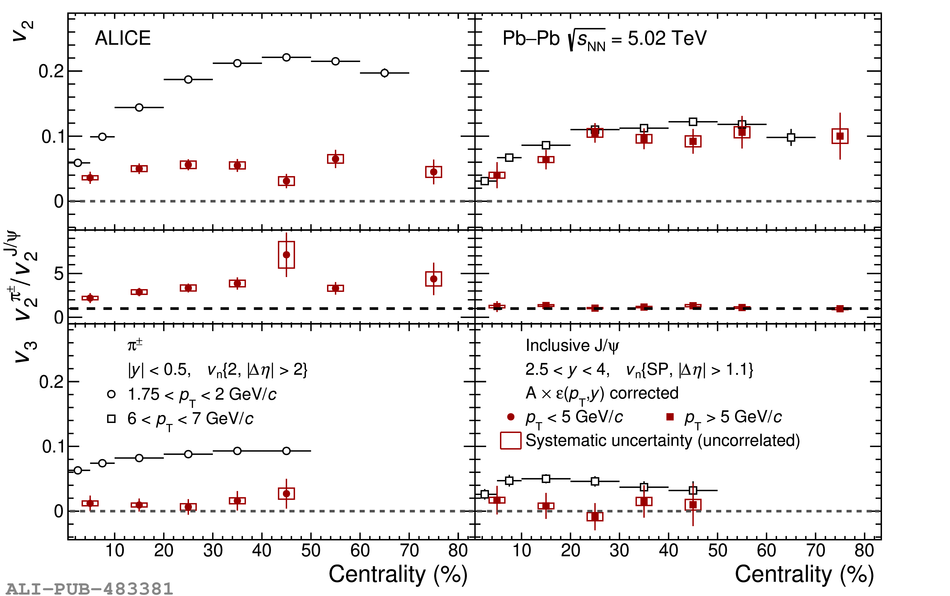The inclusive J/$\psi$ elliptic ($v_2$) and triangular ($v_3$) flow coefficients measured at forward rapidity (2.5 $<~y<~$ 4) and the $v_2$ measured at midrapidity ($|y|<~$ 0.9) in Pb-Pb collisions at $\sqrt{s_{\rm NN}}$ = 5.02 TeV using the ALICE detector at the LHC are reported. The entire Pb-Pb data sample collected during Run 2 is employed, amounting to an integrated luminosity of 750 $\mu$b$^{-1}$ at forward rapidity and 93 $\mu$b$^{-1}$ at midrapidity. The results are obtained using the scalar product method and are reported as a function of transverse momentum $p_{\rm T}$ and collision centrality. At midrapidity, the J/$\psi$ $v_2$ is in agreement with the forward rapidity measurement. The centrality averaged results indicate a positive J/$\psi$ $v_3$ with a significance of more than 5$\sigma$ at forward rapidity in the $p_{\rm T}$ range $2<~p_{\rm T}<~5$ GeV/$c$. The forward rapidity $v_2$, $v_3$, and $v_3$/$v_2$ results at low and intermediate $p_{\rm T}$ ($p_{\rm T} \lesssim 8$ GeV/$c$) exhibit a mass hierarchy when compared to pions and D mesons, while converging into a species-independent curve at higher $p_{\rm T}$. At low and intermediate $p_{\rm T}$, the results could be interpreted in terms of a later thermalization of charm quarks compared to light quarks, while at high $p_{\rm T}$, path-length dependent effects seem to dominate. The J/$\psi$ $v_2$ measurements are further compared to a microscopic transport model calculation. Using a simplified extension of the quark scaling approach involving both light and charm quark flow components, it is shown that the D-meson $v_{\rm n}$ measurements can be described based on those for charged pions and J/$\psi$ flow.
JHEP 10 (2020) 141
HEP Data
e-Print: arXiv:2005.14518 | PDF | inSPIRE
CERN-EP-2020-094

